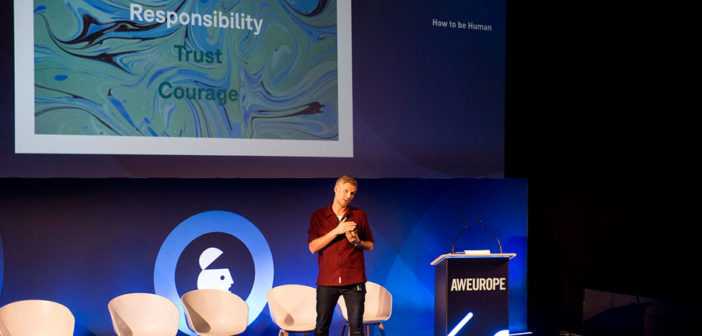“It’s something that seems surprisingly tricky (in advertising) to be human,” proclaims Samuel Akesson, the creative director of the infamous Swedish agency Frosman & Bodenfors. “We’re an agency that has decided to structure ourselves sort of differently, to pretty much any other advertising agency in the world, and in doing so – or maybe even despite doing so, we’ve managed to become one of the best advertising agencies in the world.”
Frosman & Bodenfors have been around for over thirty years, and from their track record, it seems they won’t be going anywhere anytime soon. They’ve won over a hundred “Lions” at the Cannes Lions International Festival of Creativity. In 2014, they were the most awarded ad agency in the world. And, only a few weeks ago, Fast Company pronounced them to be the fifth most innovative company in the world.

So what approach does Frosman & Bodenfors utilise that allows them to create such successful, empowering and innovative advertising? How does an industry that consistently challenges what it means to be a human, celebrate, congratulate and award an agency that approaches advertising with a purely humanistic method? And what key concepts make up that technique that has made them so successful?
“Responsibility, trust, and courage,” Akesson simply states. Responsibility allows freedom, in the sense that each team within Frosman & Bodenfors is ultimately responsible for the work that they create. “There is no hierarchy system where anyone else comes in and judges or approves or signs off anyone else’s work,” Akesson shrugs. So, this allows the whole creative process to become much faster and accelerated – meaning more and more work is produced in a shorter period of time. However, the creative teams also have the duty to ensure that their work is seen by as many other creative eyes too – allowing feedback and also ensuring that the work of a good and high quality. The difference is, there’s no one to answer to in regard to the worth of a piece of work – it is the responsibility of the creative in Frosman & Bodenfors.

Without the traditional structure of an advertising agency that features the creative director, chief creative officer, and many other positions within the industry, this puts a huge emphasis on the concept of trust within a creative profession. Age and seniority play no role according to Akesson; therefore, you must be able to trust anyone and everyone. The ability to not only trust, but also accept and take on board other individual’s comments and thoughts on your work regardless of their position within the industry is not only vital, but essential if the human approach to advertising is to be used.
Lastly, Akesson discusses the final concept that Frosman & Bodenfors bring into play: courage. “It affects your client. If you’re brave, it makes them brave too.” With the capability to be fearless in an agency comes with great rewards – it produces an environment where positivity and fearlessness in creativity are prominent and consistent. Having said that, it also comes with risks, one being that “you have the ability to look at a problem for what it really is”, Akesson remarks. Approaching problems with a courageous outlook is not only beneficial to creatives in an agency, but also for the audience the work is for, as it enables creatives to only consistently improve their work not only for themselves, but for the world.

This unconventional (and perhaps some may say controversial) method of approaching advertising, regardless of its many prosperous and successful outcomes and results, hasn’t been an easy-going process. “We constantly have to fight to work this way,” admits Akesson. Having to persuade clients to “be more human” and once again, trust in the agency’s human approach, it simply goes to demonstrate that many great things in life come with great challenges.
What does this mean for the future of creative approaches within advertising agencies? With the increasing quantity of technology integration in the industry, will our potential to be “human” be affected, as Akesson says it’s difficult to be human with terms and concepts like ‘AR’ and ‘AI’ becoming ever so relevant and prominent in advertising. “Advertising is really bad at being kind”, Akesson observes; and maybe one could argue that that is what makes Frosman & Bodenfors so successful – and arguably one of the prime examples when looking at integrating being a human into the profession: the power to be kind in an industry where kindness is a rarity.
–
This article first appeared in www.360.advertisingweek.com
Seeking to build and grow your brand using the force of consumer insight, strategic foresight, creative disruption and technology prowess? Talk to us at +9714 3867728 or mail: info@groupisd.com or visit www.groupisd.com

